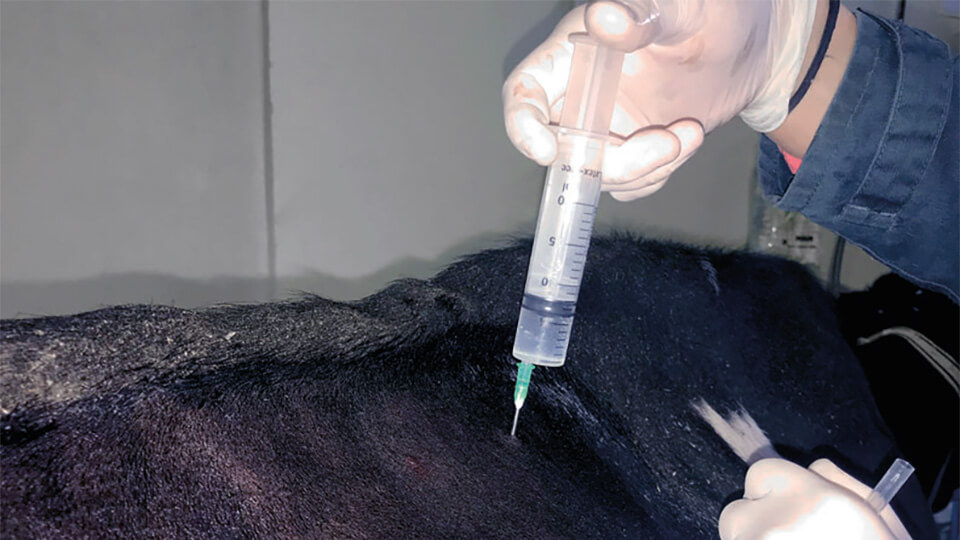L’utilisation de la kétamine comme agent d’induction et d’entretien de l’anesthésie chez le cheval

Auteurs
Résumé
La kétamine est l’agent de l’anesthésie générale le plus utilisé chez le cheval. Administré après une sédation profonde, elle permet l’induction de l’anesthésie et le coucher du cheval dans de bonnes conditions, en particulier si elle est accompagnée d’un agent myorelaxant comme le diazépam. En association avec un protocole analgésique adéquat, elle apporte temps d’anesthésie d’une vingtaine à une trentaine de minutes et peut être re-dosée pour prolonger son effet. Un re-dosage multiple aboutit à un effet cumulatif détériorant la qualité du réveil. Pour contrecarrer ce risque, son administration en perfusion continue avec la guaïfénésine et un alpha-2agoniste jusqu’à une heure de temps d’anesthésie offre une bonne myorelaxation, une analgésie et profondeur d’anesthésie adéquates pour de multiples interventions de terrain, et est poursuivie par un réveil calme et progressif.
Abstract
Administered after deep sedation, it allows anaesthesia induction and to lay the horse down without risk, especially if it is accompanied by a muscle relaxant such as diazepam. In association with an appropriate analgesic protocol, it can induce anaesthesia for about twenty to thirty minutes and can be reinjected in order to prolong the effect. Repeated re-injection has a cumulative deleterious effect on the animal’s emergence from anaesthesia. In order to counter this risk, its administration in a continuous infusion with guaifenesin and an alpha-2agonist offers up to one hour of anaesthesia with good muscle relaxation, adequate analgesia and deep anaesthesia allowing several types of field intervention to be performed. In addition, it is followed by a calm and progressive emergence from anaesthesia.
D'autres articles
N°74 Mai-juin 2014 Page 3
Toutes espèces · Clientèle


